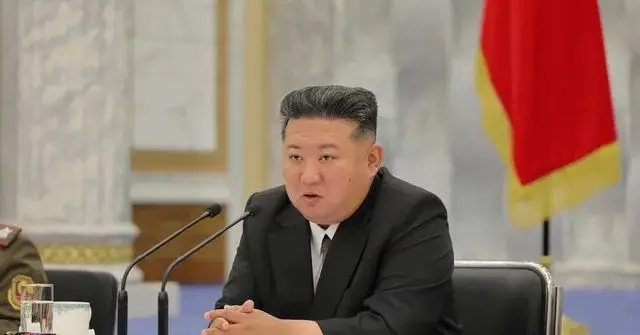By Ollus Ndomu
North Korean leader Kim Jong Un has intensified calls for heightened military preparedness, overseeing a series of drills and party meetings aimed at bolstering the country’s defense capabilities. This push comes in the wake of a significant naval mishap that has drawn rare public criticism from the regime.
In late May, Kim chaired an expanded session of the 8th Central Military Commission of the Workers’ Party of Korea, emphasizing the need for party organizations to play a stronger role in implementing military strategies. He underscored the importance of conducting frequent firing contests that simulate real combat conditions to enhance the Korean People’s Army’s readiness.
Following the meeting, Kim supervised a large-scale artillery drill, reinforcing his commitment to building a powerful and combat-ready military force. These activities are part of a broader effort to modernize North Korea’s military capabilities amid escalating regional tensions.
However, these developments occur against the backdrop of a failed warship launch that has been labeled a “criminal act” by Kim himself. On May 21, a 5,000-ton Choe Hyon-class destroyer capsized during a side launch at the Chongjin shipyard, causing significant damage to the vessel. The incident led to the arrest of four officials, including senior members of the Munitions Industry Department.
Despite this setback, Kim has ordered that the damaged warship be repaired and ready before the upcoming Workers’ Party meeting in June, signaling his determination to continue advancing North Korea’s naval capabilities.
In addition to artillery drills, North Korea conducted missile exercises simulating nuclear counterstrikes against U.S. and South Korean forces. These drills involved short-range ballistic missiles and multiple launch rocket systems capable of delivering tactical nuclear warheads. Kim emphasized the need for the country’s nuclear forces to maintain a rapid response posture in the face of perceived threats.
Analysts suggest that these military activities serve multiple purposes: demonstrating strength to both domestic and international audiences, deterring adversaries, and compensating for the embarrassment caused by the failed warship launch. The public acknowledgment of the naval mishap, a rare move by North Korean standards, indicates a strategic decision to maintain control and discipline within the military-industrial complex.
As North Korea continues to prioritize military modernization, the international community remains watchful of its actions, particularly in light of ongoing tensions on the Korean Peninsula and the broader Indo-Pacific region. Kim’s recent directives underscore his commitment to enhancing the country’s defense posture, even as challenges persist.
The coming months will be critical in assessing the trajectory of North Korea’s military developments and their implications for regional stability. Observers will be closely monitoring the outcomes of the planned Workers’ Party meeting and any subsequent military activities.


